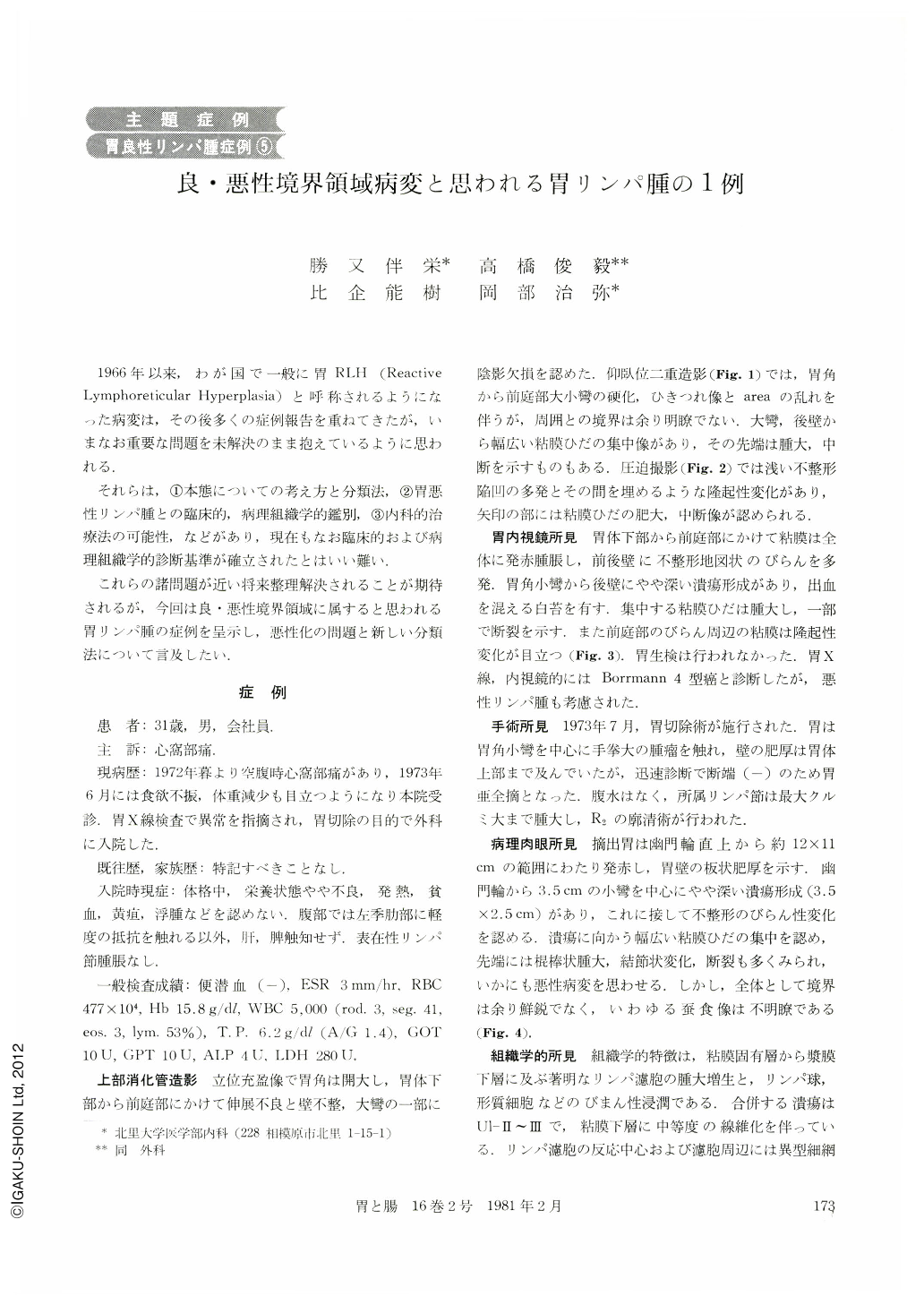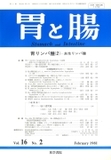Japanese
English
- 有料閲覧
- Abstract 文献概要
- 1ページ目 Look Inside
1966年以来,わが国で一般に胃RLH(Reactive Lymphoreticular Hyperplasia)と呼称されるようになった病変は,その後多くの症例報告を重ねてきたが,いまなお重要な問題を未解決のまま抱えているように思われる.
それらは,①本態についての考え方と分類法,②胃悪性リンパ腫との臨床的,病理組織学的鑑別,③内科的治療法の可能性,などがあり,現在もなお臨床的および病理組織学的診断基準が確立されたとはいい難い.
A 31 year-old male came to the Kitasato University Hospital with a chief complaint of epigastralgia. On physical examination, superficial lymphadenopathy fever and anemia were not recognized. Upper gastrointestinal series revealed rigidity of the gastric walls with some filling defects from the gastric angle to the antrum. On the double contrast as well as compression pictures, multiple irregularly shaped shallow ulcers surrounded by abnormal thickening and interruption of the mucosal folds were demonstrated. Borrmann 4-typed gastric cancer or malignant lymphoma of the stomach was suspected endoscopically.
Subtotal gastrectomy was performed on July 4, 1973. Histologically, marked proliferation of the lymphoid tissues accompanying a number of plasma cells and eosinophiles infiltrate, were seen diffusely from the lamina propria to the subserosa. Many large atypical lymphoid cells and a few mitotic figures were seen, but neither monotonous proliferation nor vessel invasion of the atypical cells, which indicate malignancy, were not recognized. Associated ulcers were Ul-Ⅱ or Ul-Ⅲ, accompanied with moderate fibrosis in the submucosal layer. From these findings, we diagnosed this so-called borderline lesion, which was difficult to determine whether benign or malignant histologically.
RLH of the stomach has been classified into two types by Nakamura (1966) in Japan. One of them was “diffuse and flat” form, another was “localized and hypertrophic” form. Our case was not belonged to Nakamura's classification, but resembled the Borrmann 4-typed gastric cancer or giant fold gastritis, which has been reported popularly as gastric pseudolymphoma in Europe.
We termed this type of RLH of the stomach as “infiltrative and hypertrophic” form, having tumorforming tendency. As some of this type of lesions may possibly change to malignancy, an early operation or strict follow-up study should be necessary.

Copyright © 1981, Igaku-Shoin Ltd. All rights reserved.


